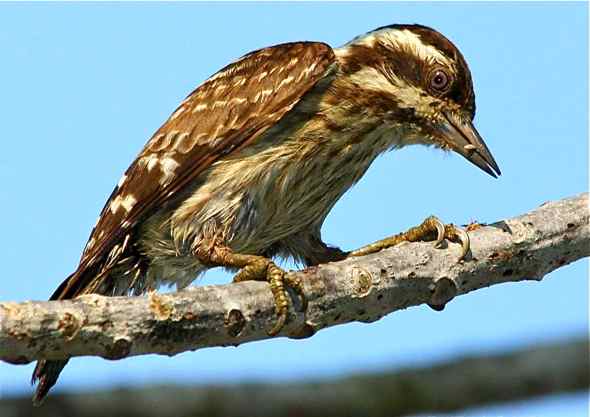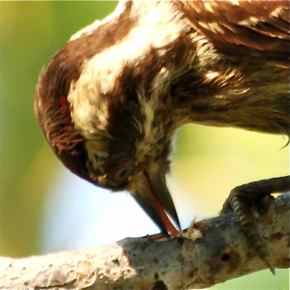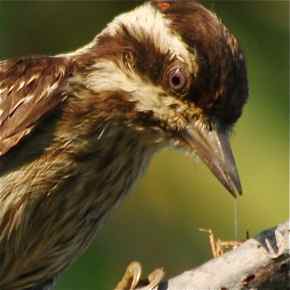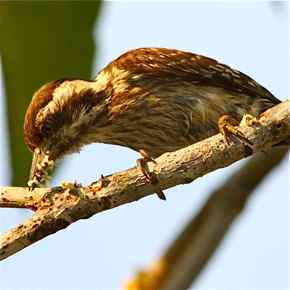“The Sunda Pygmy Woodpecker, also known as the Brown-capped Woodpecker (Dendrocopos moluccensis), is the smallest woodpecker in Singapore. Males can be distinguished from females by its two small red streaks located on both sides of its crown above and behind the eyes. However, the small red patch may not be always visible as it is usually hidden in the brownish crown feathers.
“In June 2009, there was an opportunity for a close-up observation of a male adult feeding its male fledgling when I chanced upon the adult bird foraging for food on a low branch of a small tree in a park (above).
“The woodpecker looked comical as it scrutinised intensely at its perch; using its flexible neck to turn its head acutely to its left, right and downwards. After a short recce, it used its sharp pointed beak to chisel at a section of the horizontal perch. Chips could be seen flying furiously into the air as its beak repeatedly hammered away. Later, it was seen picking up quite an amount of whitish grub with its beak. Part of its long pinkish tongue could be seen probing into the cavities (above left). Some sticky fluid could also be seen streaking across the air gap between its beak and the branch (above right). The food caught was kept in its beak (below left) to be later transferred into the open gape of the waiting juvenile (below right).
“The young fledgling, which had a more puffy look, was observed waiting patiently while its tired-looking parent did all the hard work foraging on another branch of the same tree. The youngster may have fledged not too long ago and may still lack the skills to forage on its own. Gradually, it will learn and acquire foraging and other skills by understudying its parent.
“I tried looking for the other members of their family but failed to locate them. The mother must be looking after the other juvenile or juveniles, which may not have fledged.”
Kwong Wai Chong
Singapore
5th March 2010
Images by Kwong Wai Chong.













